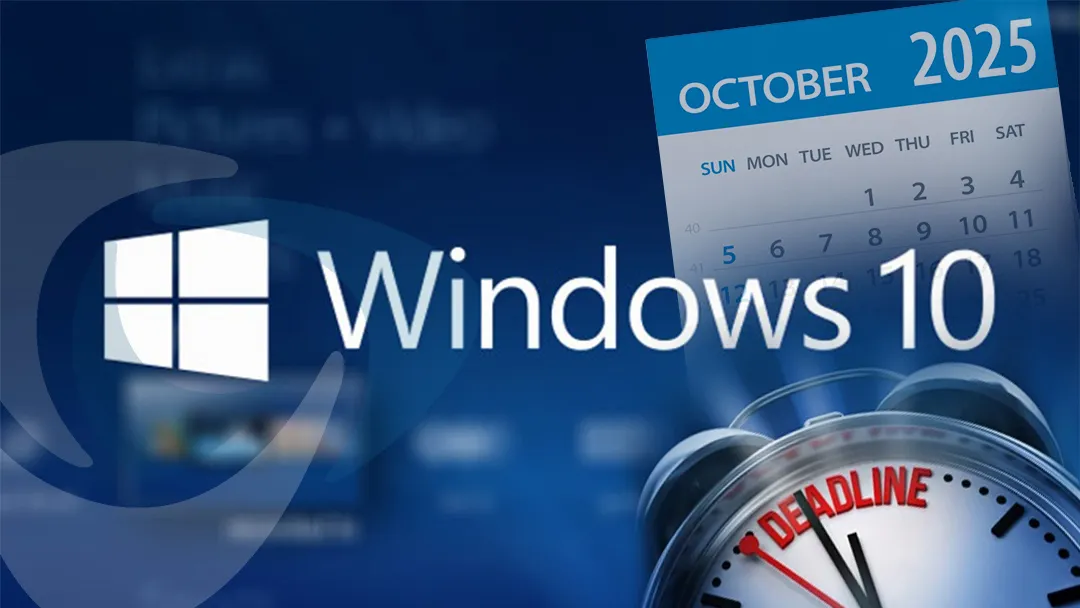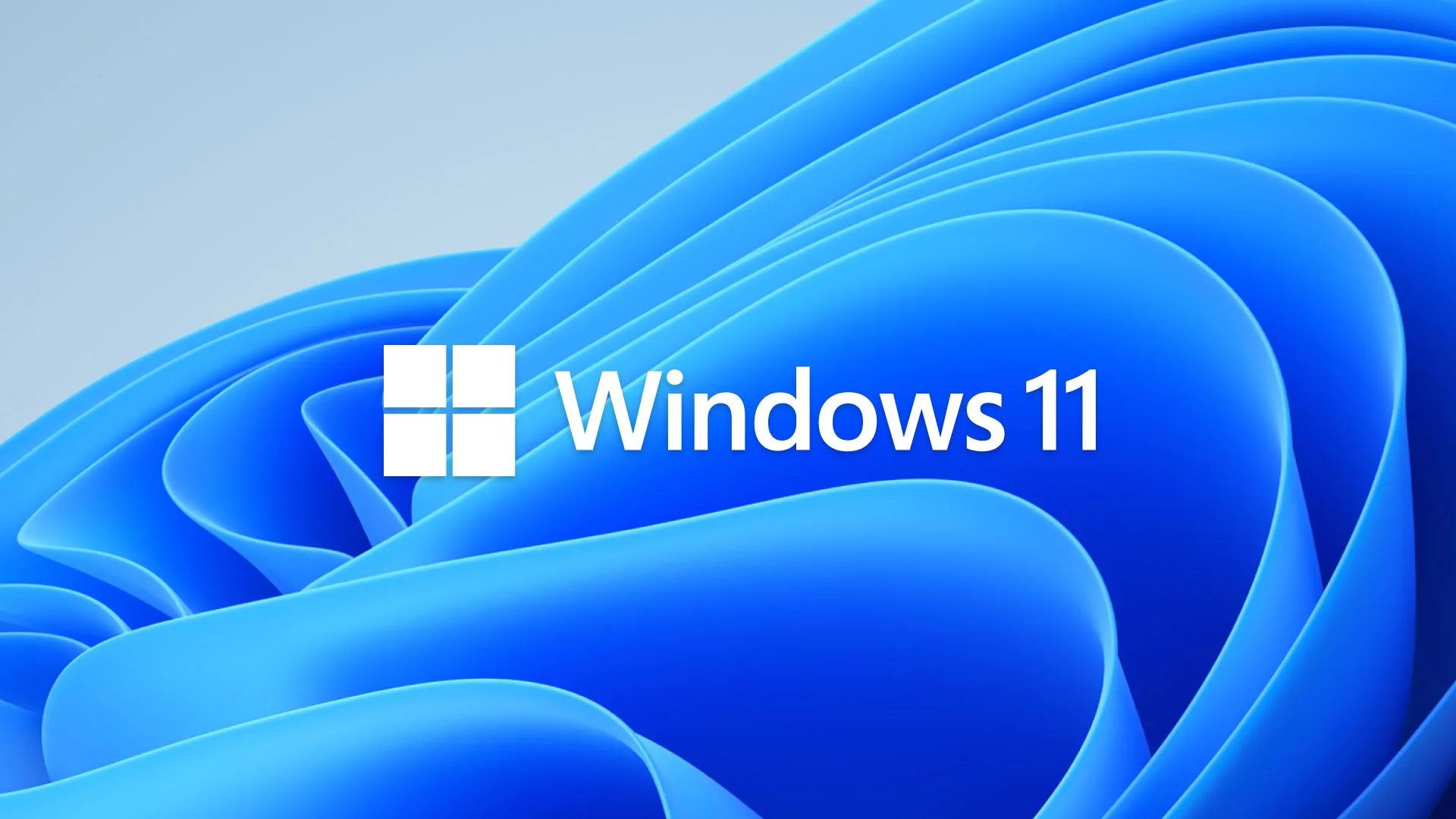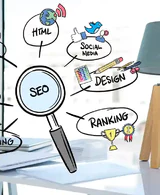
Windows 10’s End of Life: Why It’s Actually a Good Thing for Your Business!
As many businesses prepare for a post-Windows 10 world, it’s easy to feel a twinge of apprehension. After all, Windows 10 has been the backbone of countless workplaces since its launch in 2015. However, Microsoft has announced that support for Windows 10 will officially end on 14 October 2025. At that point, there will be no more security updates, bug fixes or technical assistance for this operating system. While that may sound daunting, the end of Windows 10 actually represents a golden opportunity for organisations to embrace Windows 11, bolster cyber security, optimise performance and drive business productivity to new heights.
By treating Windows 10 End of Life not as a crippling deadline but rather as a catalyst for growth, businesses can implement an Operating System Upgrade that future-proofs their IT infrastructure. Windows 11 brings an array of Windows 11 features – from strengthened Security features and Multi-factor authentication to advanced productivity tools and enhanced Hardware compatibility. With the right upgrade plan and data backup strategy, transitioning to Windows 11 can be a seamless migration that accelerates business growth while maintaining Business continuity.
In this article, we’ll explore why Windows 10 support ending is a positive change, delve into the standout benefits of Windows 11, outline the risks of clinging to Windows 10 past its end of support, and provide practical guidance for a smooth Windows 11 migration. By the end, you’ll understand how this upgrade can catalyse Business productivity and how ICTechnology can assist with expert IT consulting and Tech support every step of the way.
Why Windows 10’s End of Life is a Positive Change
We’ve all been there—sitting with our old laptops or PCs, making do with outdated software and constantly worried about security. As Windows 10 reaches its end of life, it’s time to bid those old habits farewell. From October 2025, Microsoft is ending support for Windows 10 in October 2025. That means no more security patches, no bug fixes, and no technical support. This could put your business at risk, especially when it comes to cyber threats, which are constantly evolving.
So why is this actually good news? Well, the end of Windows 10 presents an opportunity for your business to upgrade to Windows 11, which comes with a whole host of benefits that can help your business run faster, more securely, and more efficiently.
What Makes Windows 11 So Special?
Upgrading to Windows 11 is about more than just security. It unlocks a suite of Windows 11 features that directly support business productivity, Performance optimisation and hybrid working models that have become commonplace. Below, we highlight some of the most impactful elements:
Enhanced Security and Cybersecurity
- Hardware-Based Isolation & Secure Boot: Windows 11 requires a Trusted Platform Module (TPM) 2.0, ensuring that malicious code cannot tamper with system files before the OS loads. Secure Boot further verifies the integrity of each component in the boot process, protecting against rootkits and bootkits.
- Multi-Factor Authentication (MFA): Built-in support for MFA reduces the risk of account compromise. By integrating biometrics (e.g. Windows Hello) and hardware tokens, businesses can strengthen access controls for sensitive applications and data.
- Windows 11 Security Centre: A centralised dashboard makes it easier to monitor antivirus status, firewall settings and device health. Automated security recommendations help IT teams address threats proactively.
These robust Security features give most SMBs peace of mind in an era where cyber threats evolve daily .
Performance Optimisation & System Performance
- Faster Boot Times: Windows 11 has been fine-tuned to reduce boot delays and minimise background processes, leading to quicker wake-from-sleep functionality—crucial for teams that alternate between office and home in hybrid-working setups.
- Resource Management: With intelligent scheduling and memory management, Windows 11 allocates processor time more efficiently, ensuring foreground applications run smoothly while keeping resource-hungry tasks from slowing the system.
- Battery Conservation: Laptops running Windows 11 benefit from improved battery life due to dynamic power management. This is particularly useful for field staff or employees who travel between meetings, enhancing overall business productivity.
New Productivity Tools
- Snap Layouts & Snap Groups: These features let users organise multiple windows with ease, arranging applications side by side or in grids for optimal multitasking. For instance, a project manager can view a spreadsheet, Teams meeting window and a browser simultaneously—boosting efficiency.
- Virtual Desktops: Teams can create separate virtual workspaces for different projects or clients, reducing clutter and helping employees focus. This is a boon for enterprises juggling multiple tasks or for consultants managing several clients concurrently.
- Widgets Panel: Customisable widgets offer real-time updates on news, calendars or tasks, helping staff stay informed without switching between programmes.
Software Compatibility & Hardware Compatibility
- Legacy Support & New Drivers: While Windows 11 is optimised for modern hardware, it still supports most applications compatible with Windows 10. Manufacturers are increasingly releasing drivers tailored to Windows 11’s architecture, ensuring new devices—from graphics cards to peripherals—work seamlessly.
- DirectStorage & Gaming Features: While primarily aimed at gamers, DirectStorage reduces load times for data-intensive applications. Creative agencies and design firms also benefit from accelerated file access when working with large graphics or video files.
Collaboration Features & Hybrid Working
- Microsoft Teams Integration: Windows 11 integrates Teams directly into the taskbar, streamlining communication. One-click access to video calls, chats and file sharing keeps hybrid teams connected—essential for maintaining Business continuity and ensuring that remote staff feel just as engaged as those in the office.
- Enhanced Touch & Pen Support: For workplaces leveraging tablets or touch-enabled devices, Windows 11 offers more responsive stylus input and refined touch gestures, which can improve note-taking, sketching and whiteboarding in collaborative sessions.
By harnessing these Windows 11 features, Australian businesses can achieve a more secure, efficient and connected work environment—ripe for driving business growth in today’s competitive landscape.
The Risks of Sticking with Windows 10
Continuing to run Windows 10 after its End of Life carries significant security and operational risks. Below, we outline the key dangers:
Heightened Security Vulnerabilities
Once Windows 10 reaches End of Life, Microsoft will no longer issue Windows 10 support updates or security patches. Any new exploits discovered will remain unaddressed on outdated machines, leaving them dangerously exposed to cyberattacks. The Australian Cyber Security Centre explicitly recommends upgrading to supported operating systems to reduce vulnerability to threats, noting that running unsupported systems is a major risk factor in cyber security incidents .
Software Compatibility & Productivity Loss
As developers update applications to leverage Windows 11 security and APIs, Windows 10 users may find that new versions of essential software (e.g. Office 365, Adobe Creative Cloud) either underperform or cease to function entirely. This Software compatibility gap can lead to productivity bottlenecks and, over time, force costly workarounds.
Diminished Technical Support
After support ends, Microsoft will not provide technical assistance for Windows 10. If mission-critical systems fail, businesses are left to rely solely on in-house teams or third-party Tech support providers. Crucially, troubleshooting becomes more challenging without vendor support, which can drive up downtime and recovery costs.
Degraded System Performance
Over time, Windows 10 may start to underperform as hardware and software evolve. Without performance updates, older systems can become sluggish, leading to slow boot times, lagging applications and decreased system performance. In an environment where every second counts, these delays translate directly into lost revenue.
Hardware Compatibility Issues
Modern hardware vendors focus new driver releases on supported operating systems. After Windows 10 End of Life, any upgrade or replacement components—be it SSDs, graphics cards or peripherals—may lack Windows 10 drivers. This Hardware compatibility issue can impede the ability to enhance existing workstations, forcing full hardware replacements instead of incremental upgrades.
Overall, sticking with Windows 10 beyond its support window jeopardises security, impairs productivity and undermines Business continuity.
Preparing for Your Windows 11 Business Upgrade
A successful Windows 11 upgrade begins with an IT audit and compatibility check: list all devices running Windows 10, verify they meet Windows 11 requirements (such as TPM 2.0 and supported CPUs), and confirm critical applications are compatible. At the same time, establish a data-backup and disaster-recovery plan by using cloud backups for real-time syncing, creating full system images, and testing restores to safeguard against any data loss during migration.
Next, run a small pilot: select a representative group to install Windows 11, gather feedback, and train them on new features like Snap Layouts and Teams integration. Roll out the upgrade in logical cohorts (by department or location) during off-peak hours to minimise downtime, with tech support on standby. After deployment, tune performance by monitoring CPU, memory and storage usage, enforce security measures such as multi-factor authentication and firewall reviews, and maintain an ongoing schedule for patching and hardware health checks to ensure sustained system performance and business productivity.
How ICTechnology Can Help You Make the Transition
Upgrading an entire business to a new operating system can seem daunting, but with ICTechnology by your side, the process is made easy and stress-free. Here’s how we can support your business during the transition to Windows 11:
- Expert Consultation and Planning: Our team will work with you to assess your business needs and develop a customised upgrade plan. We’ll ensure that your systems, software, and devices are fully compatible with Windows 11 before making the switch.
- Seamless Migration: Our expert technicians will handle the entire upgrade process, from system backups to software installations. We ensure minimal disruption to your operations, allowing you to continue business as usual while we work behind the scenes.
- Training and Support: We offer training for your staff to get them up to speed with Windows 11’s new features and capabilities. Plus, our ongoing support ensures that any issues are promptly addressed, so you can focus on growing your business without worrying about tech problems.
- Cybersecurity Assurance: With the enhanced security features of Windows 11, we’ll make sure your systems are fully protected. From encryption to secure cloud storage, ICTechnology will ensure that your data stays safe and secure in the new environment.
- Ongoing Monitoring and Optimisation: Once the upgrade is complete, we don’t stop there. Our team will continue to monitor your systems for performance and security, ensuring that your business is always running at its best.
Ready for the Upgrade?

windows 11 with ICTechnology
Don’t let the end of Windows 10 be a cause for concern. Instead, let it be the opportunity your business needs to level up! With Windows 11’s improved security, productivity features, and future-proof compatibility, your business can thrive in the digital age.
At ICTechnology, we’re here to guide you every step of the way, ensuring your upgrade is seamless and stress-free. Let us take care of the tech, so you can focus on what matters most—growing your business. Get in touch today, and let’s make this transition a smooth and successful one!
Take the first step towards your Windows 11 upgrade with ICTechnology.
References
Australian Cyber Security Centre. (2021). Cybersecurity threats to Australian businesses. Retrieved from https://www.cyber.gov.au
Australian Cyber Security Centre. “End of support for Microsoft Windows and Microsoft Windows Server.” Cyber.gov.au. First published 01 Nov 2019; Last updated 20 Mar 2024. Available at: https://www.cyber.gov.au/resources-business-and-government/maintaining-devices-and-systems/system-hardening-and-administration/legacy-ict-management/end-support-microsoft-windows-and-microsoft-windows-server
Australian Government Department of Industry, Science, Energy, and Resources. (2020). The Future of Australian Business: Embracing Technology. Retrieved from https://www.industry.gov.au
Microsoft. (2021). Windows 11: What’s new and how to get it. Retrieved from https://www.microsoft.com/en-us/windows/windows-11
Microsoft Australia. “Windows 10 support ends on October 14, 2025.” Microsoft Support (AU). Available at: https://support.microsoft.com/en-au/windows/windows-10-supports-ends-on-october-14-2025-2ca8b313-1946-43d3-b55c-2b95b107f281
Microsoft Australia. “Making the transition to a new era of computing.” Microsoft Support (AU). Available at: https://support.microsoft.com/en-au/windows/making-the-transition-to-a-new-era-of-computing-235e9399-a563-40f8-be4f-fbe109be74c8
Microsoft Australia. “Serviced versions of Windows 10: Frequently asked questions.” Microsoft Support (AU). Available at: https://support.microsoft.com/en-au/windows/serviced-versions-of-windows-10-frequently-asked-questions-0543e712-b23e-b6c0-034a-45d7b559ae88





